This is the moment we’ve all been waiting for. One of the highlights of our trip. The most impressive ruins we’ve ever seen. The beauty and grandeur of the Inca people, set high atop a mountain and so remote you can only access it by train or by foot. The UNESCO World Heritage Site of Machu Picchu.
We purchased our entrance tickets to Machu Picchu online (approximately $40 USD), but I would actually recommend against this because the website is incredibly terrible and confusing. You also have to print the tickets out on paper, which could be difficult if you don’t have access to a printer. It would likely be easier to buy tickets in person at Cusco’s Visitor’s Centre. If you are looking to climb Huayna Picchu, be forewarned that you will need to book this well in advance (i.e. months). We easily booked Machu Picchu Mountain a few days’ prior to our visit for an additional fee.
We decided that instead of paying $120 per person to take the train we would take the backroads and enter via the trail along the railway tracks. That would be the budget-friendly option, right? This is what it looked like for those of you planning to take the back route:
- Drive 4 hours from Ollataytambo to Santa Teresa (last 1.5 hours on sketchy unpaved roads with drop-offs);
- Park at the campsite in Santa Teresa and take a taxi to the Hydroelectrica (i.e. the start of the train tracks);
- Walk for 2 hours along the railway tracks to Aguas Calientes;
- Take the bus from Aguas Calientes to Machu Picchu OR hike there (2 hours up steep steps). Remember to bring your passport.
We did these steps over the course of about three days, which was probably excessive, but we wanted to get to the ruins of Machu Picchu as early as possible in the morning. Make sure to buy your bus ticket in Aguas Calientes the day before you visit Machu Picchu, just to make your life easier. The bus to MP was $12 per person ONE way. We felt that was so ridiculous that we decided to pay for the bus solely on the way up. We walked back taking the steep stairs from the site, which took about an hour but was some good exercise (and saved us $24).
Getting back to Santa Teresa basically involves the same steps but in reverse (hike to Hydroelectrica, catch a cab to the campsite, pick up your vehicle and head back to wherever you are going to next – possibly back to Cusco if you are heading South).
So, with these steps in mind we left Ollataytambo and descended into the jungle to Santa Teresa. This was a bit of a shock as we hadn’t seen banana leaves, palm trees, roads with the occasional ramshackle houses, and thick green tropical forests since… Colombia and Ecuador? The temperature increased and so did the humidity.

There are some natural thermal pools close to Santa Teresa so we stopped in for a quick dip. We chatted with some fellow Canadians who were enjoying Peru’s whitewater rafting scene. After soaking our bones in the warm water, we sprinted back to the truck hoping to avoid the vampire-esque insects inhabiting the area.
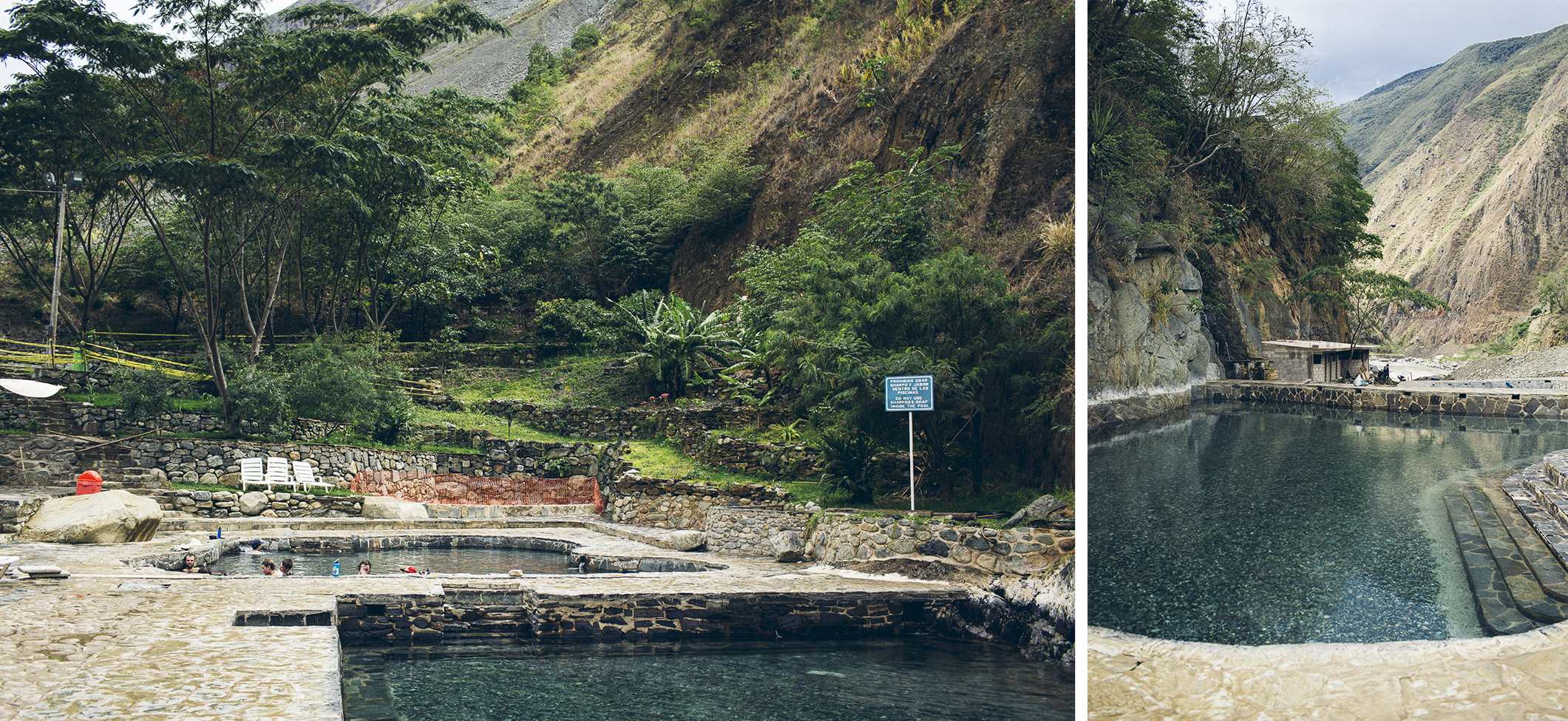
When we arrived at the campground in Santa Teresa we were like, “No effing way we’re leaving our truck here!!!!” The parking wasn’t secure AT ALL and the town itself felt sketchy. The owner of the campsite was, however, a super friendly and extremely helpful man. He even let us do dishes in the sink of his little tienda (shop). We felt a bit better knowing that local tours stopped at this location daily so there were dozens of ground tents set up at all times.
The next day we packed up, reluctantly said our (hopefully not final) goodbyes to the truck, and caught a taxi to the Hydroelectrica station. From there we hiked along the railway tracks to Aguas Calientes.


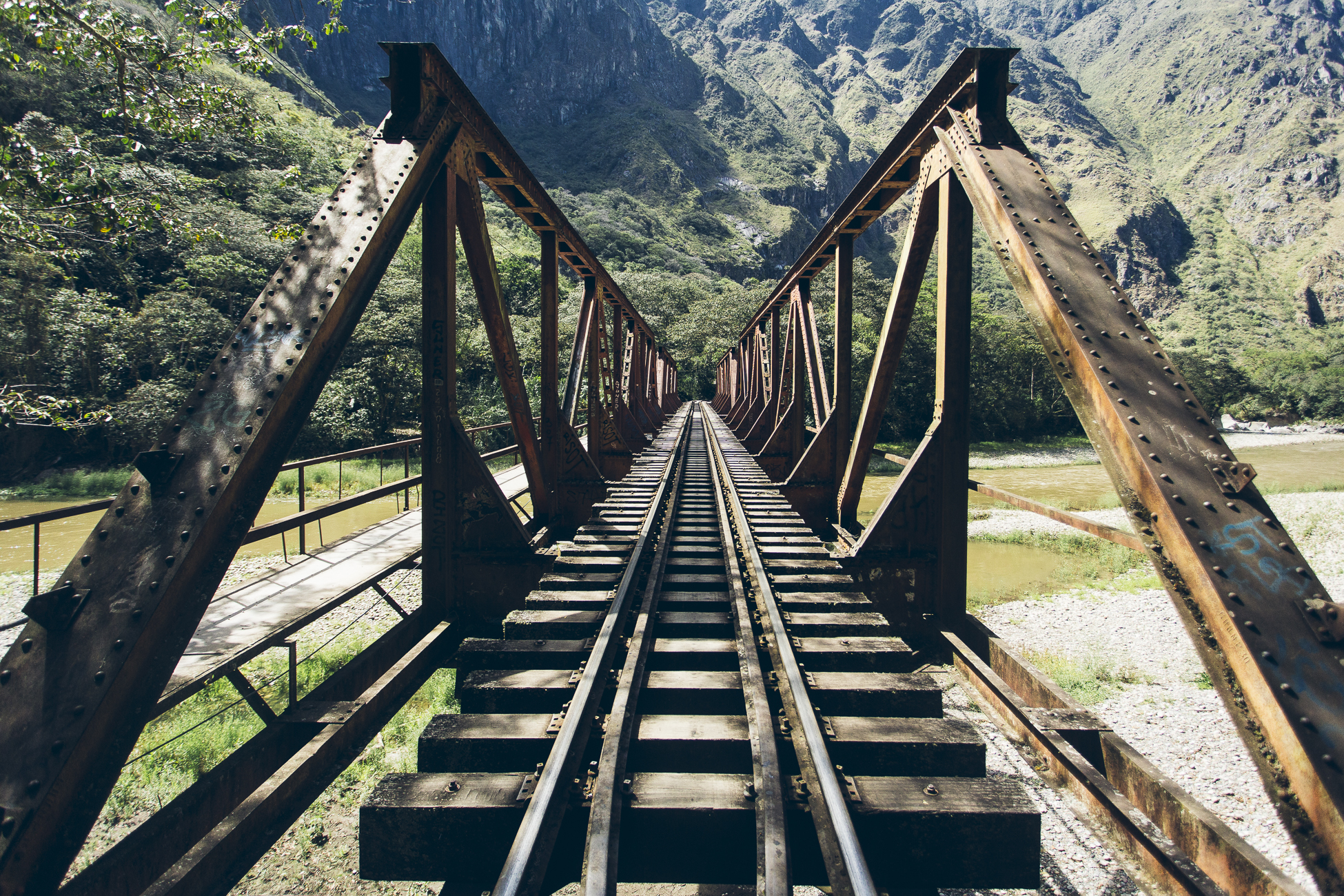
Upon arriving in Aguas Calientes we were amazed to see high-end hotels, restaurants, and a brajillion tourists in what seemed like the middle of nowhere. We slogged it to our hotel and upon arrival realized that the door was closed and there were no lights on. We opened the door and the lobby was in disarray. Oh my god. We just got scammed on the internet and we have no hostel!!!! That was the first thought that entered our minds. Then someone showed up and explained that the electricity was out for the afternoon and they were painting the walls of the lobby. After this quick conversation they led us up to our room which had a BATHTUB and KING-SIZED BED! What!? We picked one of the most budget options in town and felt super spoiled.

Bug bites from our campsite in Santa Teresa. They love Richard’s sweet, sweet blood.

We reluctantly left our room in search of food. Touts lined the streets holding menus and shouting to us in English, encouraging us to choose their restaurants for our dining experience. What was this place, South East Asia? Eventually we decided on a restaurant, seemingly busy. We again decided on a budget option. We shared a small pizza and a lemonade. When our bill arrived it revealed a special 20% service tax. WTF. Another traveler we met accurately dubbed this extra cost as the “Inca Tax” – ordinary items costing 50% extra due to their connection with the infamous Incas. Luckily we found a really great restaurant the next day by the name of The Tree House, and not only did we get a free appetizer but there was no service tax whatsoever. Plus the actual service was fantastic and the food was tasty.
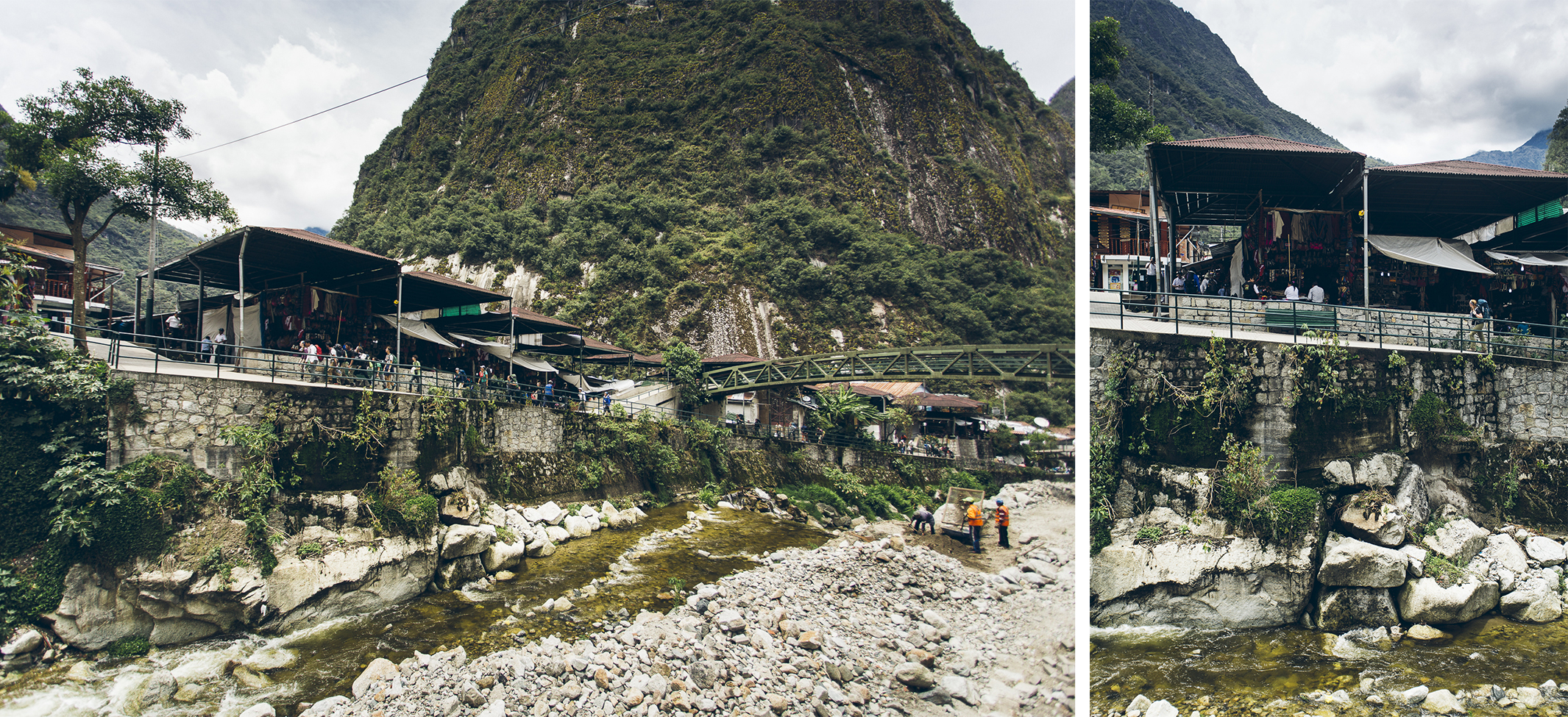
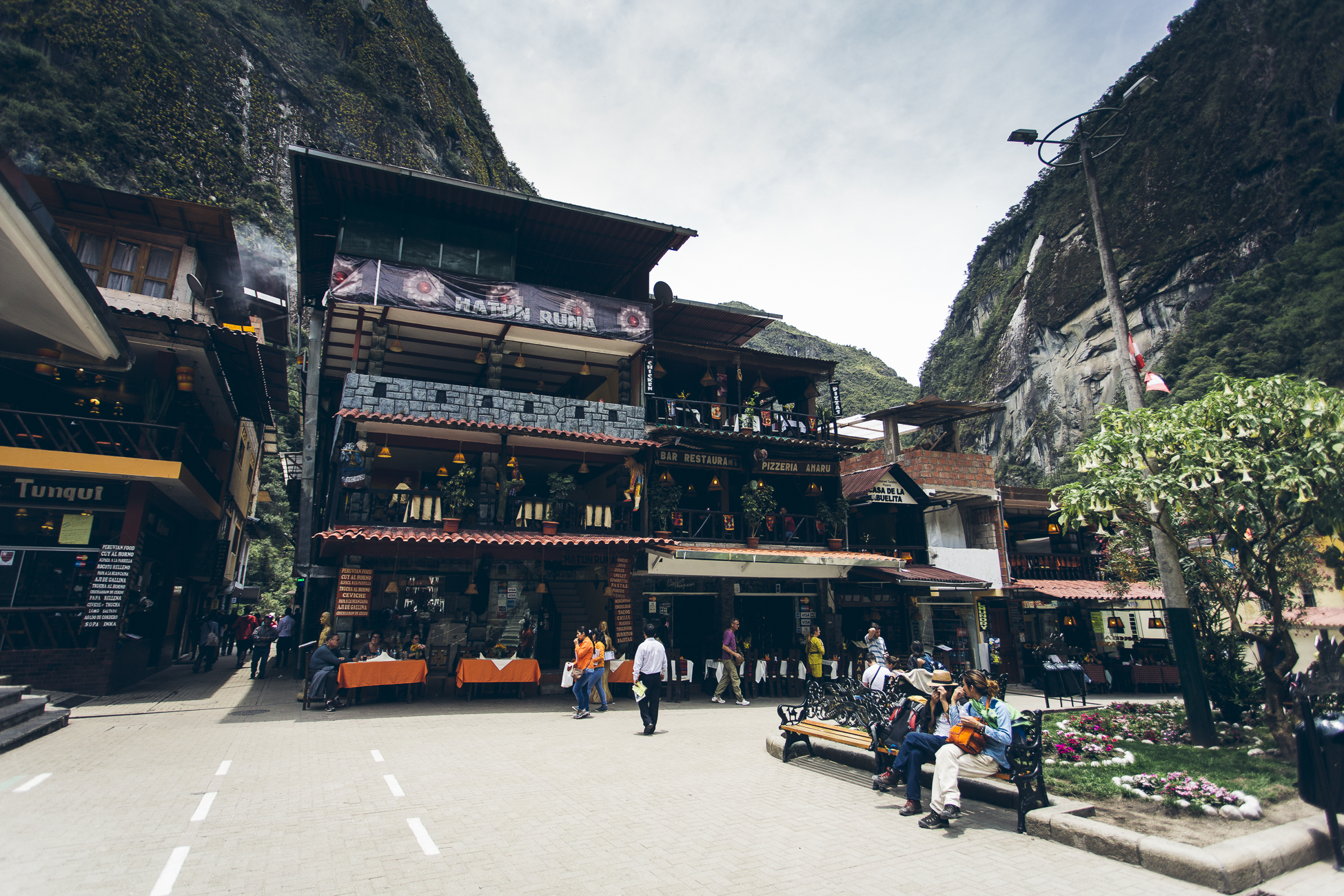
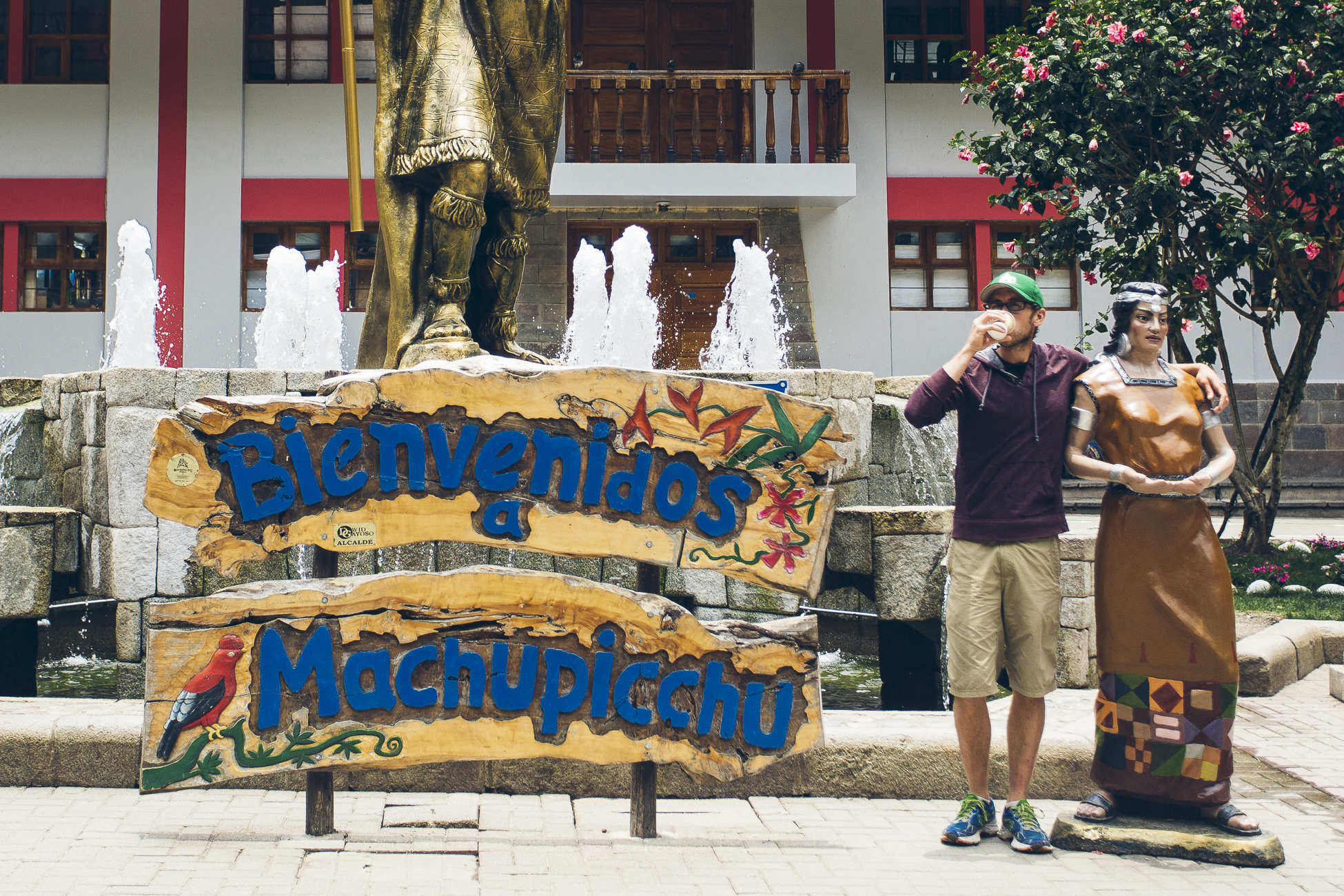



The big day: Machu Picchu day.
We woke up disturbingly early (a.k.a it was still dark out) in order to get in line for the bus at 5:30 a.m. We were excited! It is always worth it to get up before the sun rises for something special. Richard bought a warm coffee from one of the street vendors and we waited in anticipation for our bus to arrive.

There was a man checking tickets in the bus line-up and he said to us, “You have your ID, right?” Um, no. Well, Richard had his driver’s license but I left my passport and ID in the lockbox of the truck, back in Santa Teresa. “You need ID to get into Machu Picchu.” Okay, sure. We didn’t really have a choice at this point and thought he was about 30% serious, so we hopped on the bus and continued on our way. After a 20-30 minute bus ride we eagerly hopped out of the bus and joined a huge line-up at the entrance of the site. Half an hour later we reached the front of the line and were a bit disturbed by the fact that everyone else seemed to have brought their passports. Like, everyone.
I approached the ticket-taker and he asked for my ID. “I don’t have it.” I explained that we had driven here and it was in our truck back in Santa Teresa. We had literally never needed ID or my passport to enter any set of ruins on the trip so far. Plus, Richard had his ID and he was the one who bought the tickets.
“You cannot enter Machu Picchu without ID,” he said.
He was serious and at this point we were getting worried.
I explained that there was nothing on our ticket that indicated the mandatory ID requirement. He basically pulled out a magnifying glass and pointed to the tiny lettering on our tickets which said “The necessary documentation is required.”
What does that even mean?
“As you can see, everyone else here has their ID. You are the only one without ID here. You should have done your research better. You bring your Passport with you to border crossings, don’t you? Machu Picchu is treated like an international border crossing. And no, you will not be refunded. The ticket is a final sale.”
At this point both Richard and I were getting a bit worked up and had been pulled out of the line-up to the side. Someone rolled their eyes at us like we were the dumbest people in the world. I said to this clown, “What do you expect me to do, get back on the bus and leave after driving all the way here from Canada?”
“Yes.”
My eyes started tearing up. I was about to cry. I said to Richard, “It’s fine. You go by yourself and take pictures. I’ll wait here for you and you can show them to me when you get back.”
Richard developed an eye twitch, his pupils dilated… he told me later that blackness shrouded his vision. He said some strong but apparently convincing words.
And then the nice man stamped my ticket and allowed us to enter the ruin site. We were, however, forbidden to visit Machu Picchu Mountain.
So our state of mind was a bit off when we entered the ruins for the first time. Upon first glimpse we were a bit underwhelmed, but our nervous systems were still in fight or flight mode from our earlier confrontation. The ruins were definitely impressive, but I think we had higher expectations. I didn’t get that majestic feeling of an ancient civilization actually living there, like I have at some other locations. I imagine the situation would have been different if we had flown from Canada and arrived in Cusco, taken the train and seen the site at that point.
I don’t want to sound spoiled or ungrateful, but we had seen some incredibly amazing things up to this point: Yosemite, the Baja 1000, the Sun and the Moon Pyramids and Palenque in Mexico, Tikal in Guatemala, snorkelling in Belize, beautiful beaches in Costa Rica, vast dry landscapes on the ocean in Northern Colombia, erupting volcanoes in Ecuador, and the best trekking and hiking we’ve ever done in the Andes in Peru. Petra in Jordan blew Machu Picchu out of the water for us. But it is all about perspective. I don’t regret going to Machu Picchu at all and I would definitely recommend that other people go. It just wasn’t one of the highlights of the trip for us, which is a-ok, because it still looks awesome in photos.
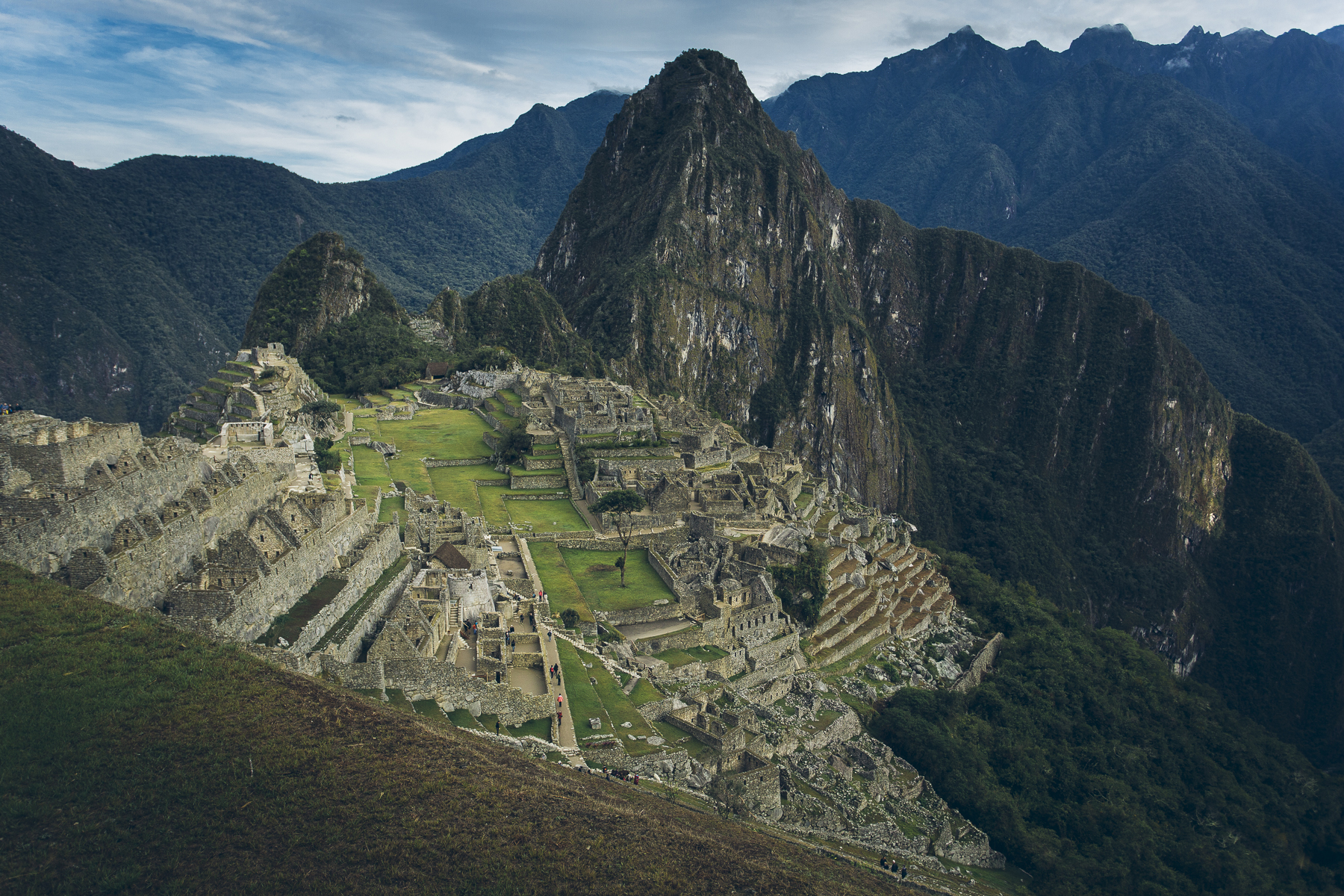
Uniquely located in the middle of a tropical mountain forest, and at the point where the Andes meet the Amazon basin, the site was built in the 15th century. There are approximately 200 structures devoted to various aspects of life: religious, ceremonial, astronomical and agricultural. A century after its construction, the Incas abandoned the city due to the Spanish Conquest. It wasn’t brought to international attention until 1911 when an American explorer and historian by the name of Hiram Bingham III, funded by Yale University and with the guidance of local indigenous farmers, arrived on site and announced its existence to the rest of the world.
Bingham excavated thousands of artifacts over a number of years from the site, taking them to Yale University for further study. A dispute arose regarding the length of time the artifacts were kept, Yale claiming that Peru didn’t have the infrastructure or conditions to care for them properly. Peru accused Yale of profiting from their cultural heritage. The artifacts were eventually returned to Peru in 2012. If you would like more reading on the history of Machu Picchu and Hiram Bingham III, we would recommend Turn Right at Machu Picchu by Mark Adams.
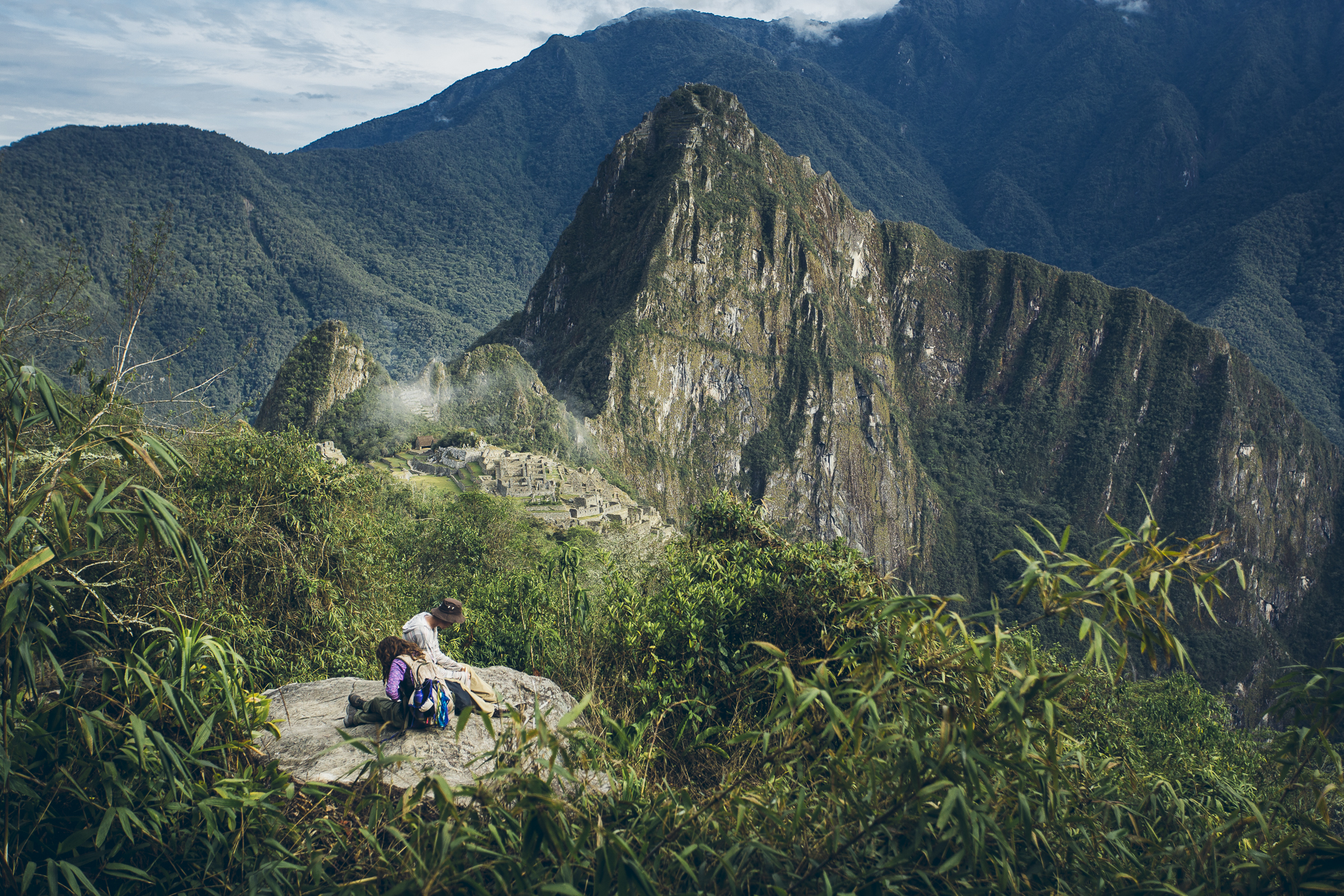



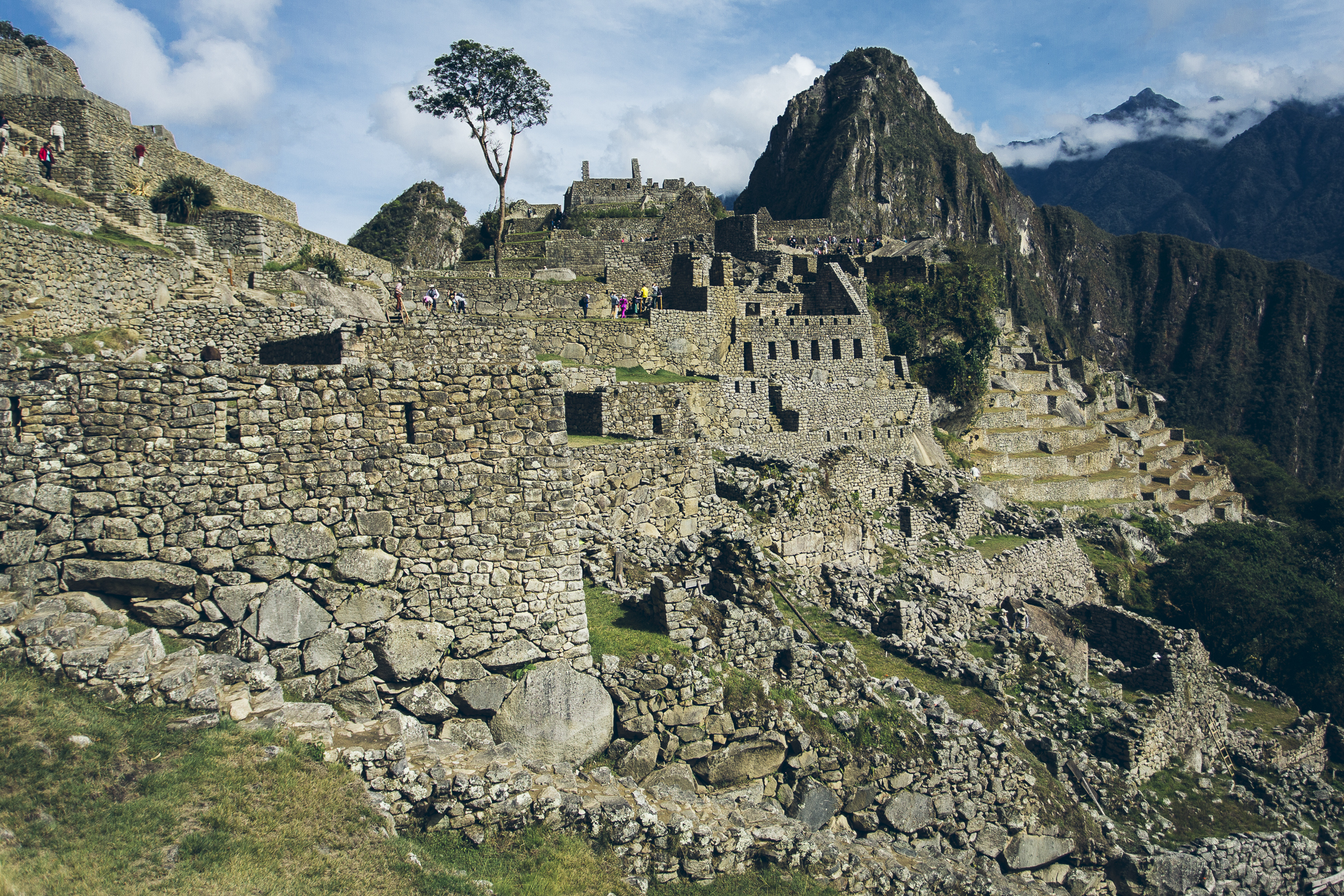
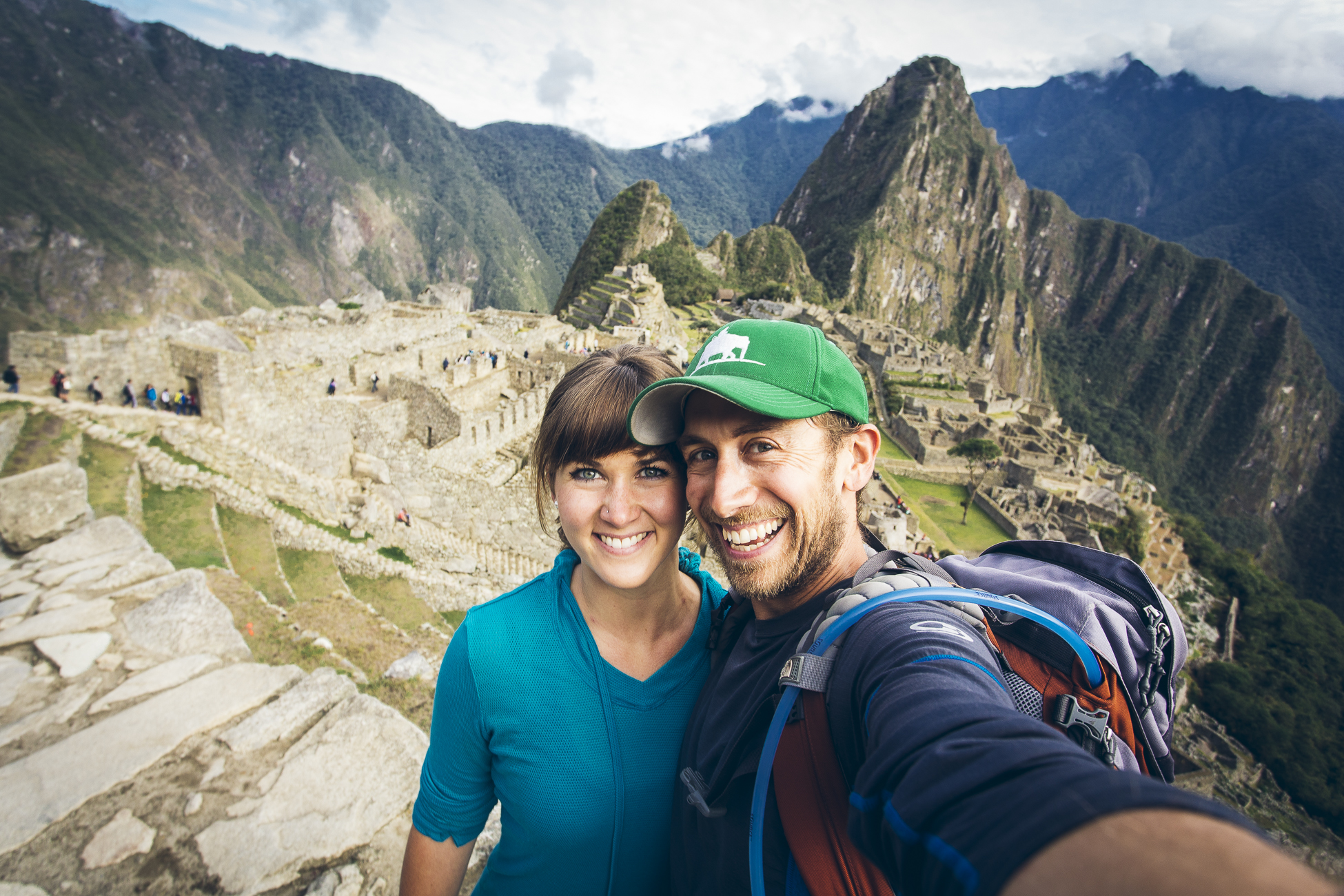
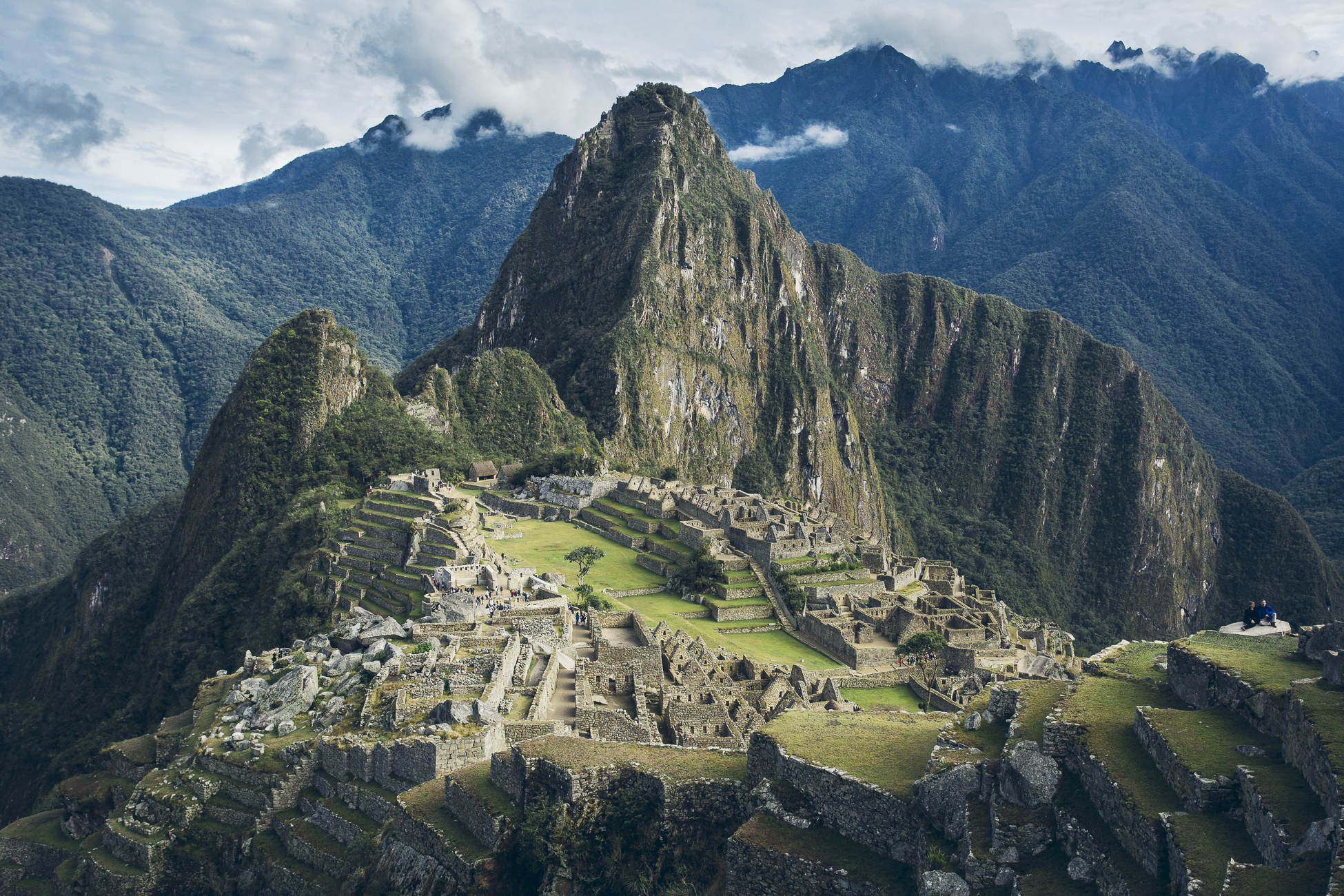

Great post, guys! I love the honesty and the pictures! Miss you guys tonnes! A xoxo
Wow . Thanks , i just love reading every new blog entry . keep travelig save and have a great time !
We’re heading to Machu Picchu next month, so excited! Your pictures look amazing, hope we get such a good day for it. So sorry you had such a horrible time getting in 🙁
Pingback: The Back Way to Machu Picchu - Live. Travel. Play.